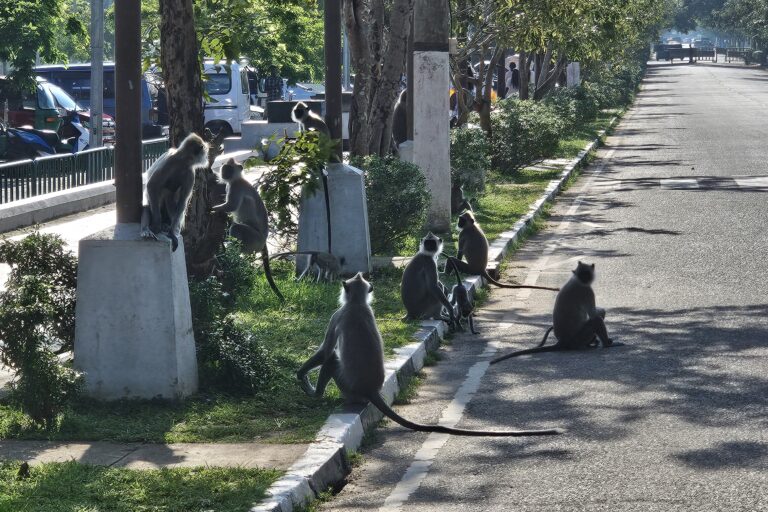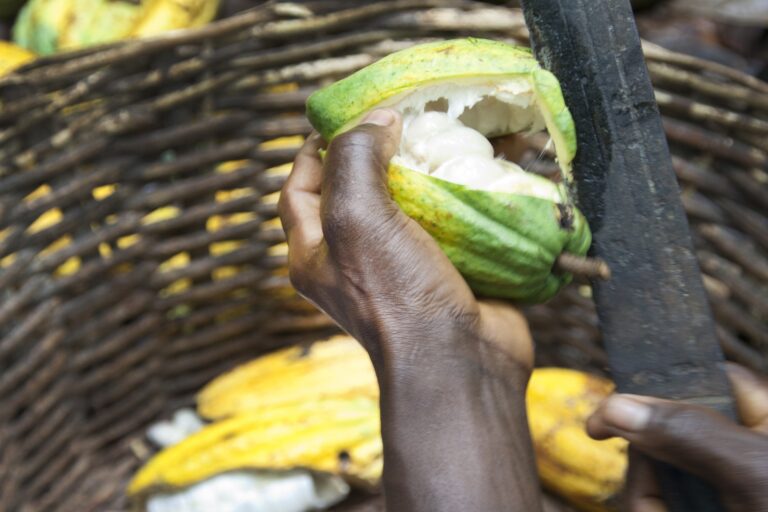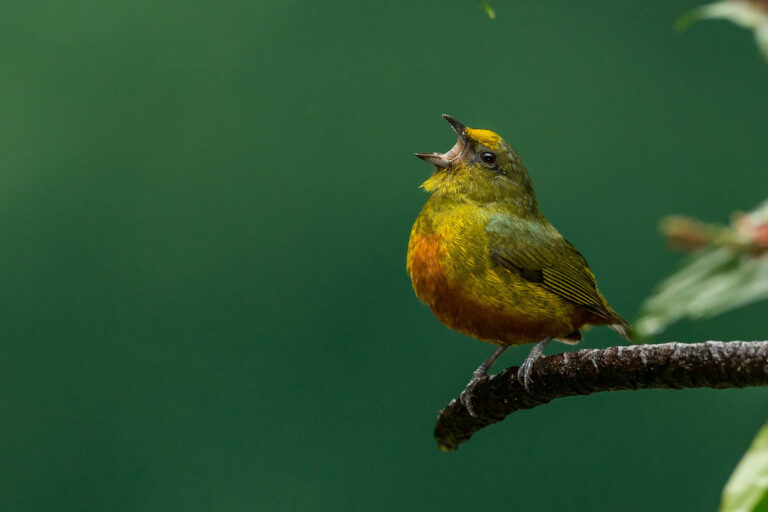- The “Rights in the Territory” project, developed by the Amazon Conservation Team and the Colombian Constitutional Court, has translated and adapted five of the court’s judgments pertaining to Indigenous peoples into 26 Indigenous languages.
- In its 30 years, the Constitutional Court has issued more than 19,000 judgments, whose technical language can often be difficult to comprehend, even for Spanish speakers.
- Key challenges in the translation process included adapting the translations in such a way that they can be understood and contextualized, and also accounting for the fact that Indigenous languages are a mostly oral tradition and not a written one.
- The results of the translation project can be found online at derechosenelterritorio.com (in Spanish).
BOGOTÁ — The year 2021 marks 30 years since Colombia adopted its current Constitution. Considered the Magna Carta of the laws of the nation, it was established in 1991 by a national assembly that replaced the 1886 Constitution, which had become obsolete.
Those were the years of the drug-trafficking boom in which drug cartels permeated all levels of Colombian society, including the highest political offices. In this scenario, the 1991 Constitution made its way as a progressive reform that, among others, proclaimed Colombia a secular state.
Another advance of the Constitution was one of its articles, number 7, which dictated that Colombia is a state that “recognizes and protects the ethnic and cultural diversity of the Colombian Nation.” In this way, the Colombian state protected the traditional legacy of what’s estimated today to be 1.5 million Indigenous peoples who inhabit its territory.
The 1991 Constitution also established the legal mechanism of tutelage action, through which any Colombian citizen can demand the fulfillment of their fundamental rights. The highest body in charge of the protection and defense of the Constitution is the Constitutional Court, which ensures compliance with the articles of the Constitution and issues judgements on those tutelage actions.
But even three decades since this essential political and social step was taken in Colombia, work remains to ensure that judgements concerning Indigenous peoples are brought to them promptly and effectively. For this reason, the Constitutional Court and the Amazon Conservation Team (ACT) have been working since 2020 on the “Rights in the Territory” project.
According to Carolina Gil, ACT’s regional director for the northwest Amazon, the objective of this initiative is to bring the court’s judgments closer to Indigenous peoples, not only translating them into their languages, but also adapting them in such a way that they can be understood and contextualized. The result of the work can be found in Spanish on the website derechosenelterritorio.com.
“In Colombia, for multiple reasons, such as the rugged geography and the armed conflict, many decisions of the court remained outside the groups on which they pronounced on, mainly the Indigenous communities that are isolated. Also, in most cases, these judgements are written in legal Spanish that is very complex, even for people in cities,” Gil told Mongabay in a phone interview.
It was with this in mind, she said, that they decided to disseminate among the Indigenous communities those judgements that concern them, not by doing a literal translation, but by making cultural and linguistic adaptations.
Of the more than 19,000 judgements issued up to 2020, ACT and the court selected five of relevance to Indigenous peoples related to issues of ethnic diversity, Indigenous self-governance and autonomy, territories, healthy environment and biocultural rights, and prior consultation. These five judgements were translated into 26 Indigenous languages from communities located throughout the country.

Protection of Indigenous territories
One of the translated judgements, SU-383 of 2003, pertains to Indigenous self-governance and autonomy. In this ruling, of interest to the peoples of the Amazon, the Constitutional Court responded to a tutelage action presented by the Organization of Indigenous Peoples of the Colombian Amazon (OPIAC) against the Presidency of the Republic, the Ministry of the Interior and Justice, the Ministry of the Environment, the National Narcotics Council, the National Narcotics Directorate, and the Director of the National Police, among others.
In their tutelage action, the OPIAC requested the suspension of aerial spraying of coca crops, specifically in the Indigenous territories of the Amazon, since the environment would be affected without the Indigenous communities being consulted beforehand.
According to the Rights in the Territory website, the Plan Colombia initiative, signed with the United States, included the eradication of coca crops in rural areas of the country through aerial spraying with glyphosate. But the planes spraying the herbicide also spread it over native forests and food crops, as well as over coca fields cultivated for traditional use.
“Although at the time there was no consensus on the risks of this chemical for human health, the Indigenous peoples of the Colombian Amazon argued that it was dangerous to use it without knowing its effects,” the website says. “Furthermore, as a preventive measure, its use should be avoided so as not to contaminate people, animals, soils and water sources.”
The spraying, between December 2000 and January 2001 in the Amazon region, where 86 Indigenous groups live, affected communities in the departments of Amazonas, Caquetá, Guainía, Guaviare and Putumayo. By not suspending them, those carrying them out were effectively exposing these inhabitants to the impacts of the herbicide, which continue to be felt today.
During that time, municipal authorities received 1,443 complaints from Indigenous people who said they were suffering from allergies, fever, headache, flu, diarrhea, vomiting, abdominal pain, dizziness, anguish, coughing, body aches, and conjunctivitis, among other symptoms.
In its legal filing, OPIAC argued that the national government had failed to carry out any prior consultation with the region’s Indigenous communities, based on its obligations as a signatory to the International Labour Organization’s (ILO) Convention 169. Known as C169, the convention enshrines consultation and participation as fundamental rights of Indigenous peoples.
The Constitutional Court’s ruling in this case reflected that point, reiterating the fundamental rights of Indigenous and tribal peoples to prior consultation. The court also ruled that the invocation of the tutelage action, usually by individuals to assert individual rights, was applicable in this case for a group of petitioners regarding the right to diversity and cultural integrity. The Indigenous community is considered a “subject” of fundamental rights, it found, and for this reason, the organizations that group them are entitled to institute actions to protect their rights.
On the spraying of the coca farms, the court said that, for the communities, coca is a sacred plant and should continue to be regarded as such, given its importance in their healing and ritual practices. The court added that the coca plant and its permitted uses should not be conflated with the cultivation of coca as a raw material for the production of cocaine.

An enriching experience
To make the adaptations to the 26 Indigenous languages, ACT and the Constitutional Court worked with an equal number of translators from the different ethnic groups. One of them was Jazmín Romero Epiayú of the Wayuu ethnic group from the south portion of La Guajira, Colombia’s northernmost department.
Romero Epiayú, 40, who defines herself as an activist, feminist and writer, translated the judgements in her town and ensured that it was an enriching process, which served to send a message that Indigenous languages should be recognized.
“This is important for the community and the entire country,” she told Mongabay in an interview. “Indigenous languages are a cultural heritage that people must know because Indigenous languages are official within their communities. And this exercise has an important political scope for Colombian Indigenous peoples.”
Romero Epiayú added that the project represented a challenge since the language of her ethnic group, like most Indigenous languages in Colombia, is based on an oral rather than a written tradition.
“What we did was to understand and interpret the judgements. This is a bet to say that there is a commitment that has been demanded from the ’91 Constitution. Part of the work for the future will be to reach the communities in person to transmit this information from orality, through broadcasters or general assemblies and other spaces where this dialogue can occur,” Romero Epiayú said.
Abel Antonio Santos Angarita, a member of the Ticuna ethnic group in the department of Amazonas, said it’s essential to expand these exercises, which contribute to the recognition, even internationally, of other thoughts and languages that are spoken In Colombia.
“This is a job that should have been done a long time ago. It was an outstanding debt. It was wonderful to transform that technical and official language of the judgements with the terms of our cosmogony,” said Santos Angarita, who studied languages at the Leticia (Amazonas) campus of the National University of Colombia.
ACT and the Constitutional Court are already working on a second part of the project that will consist of adapting new judgements to Indigenous languages and other ethnic communities, such as Afro and Raizal (Afro-Caribbean) peoples. In addition, they are planning to develop a version of the Colombian Constitution aimed at children.
Banner image: Indigenous Ticana children in Colombia. Their future depends on people working together around the globe to conserve rainforests. Image by Rhett A. Butler / Mongabay.














